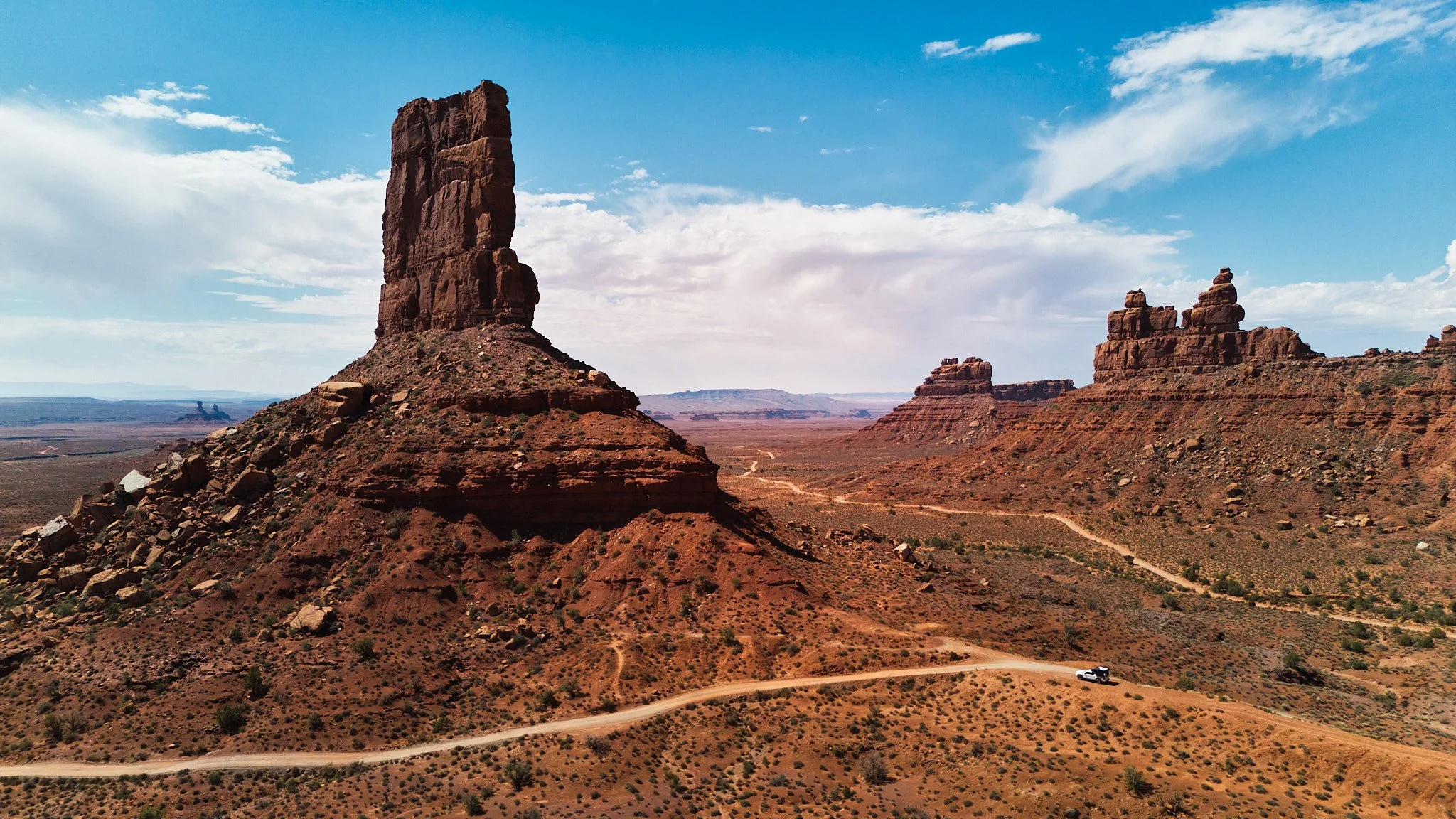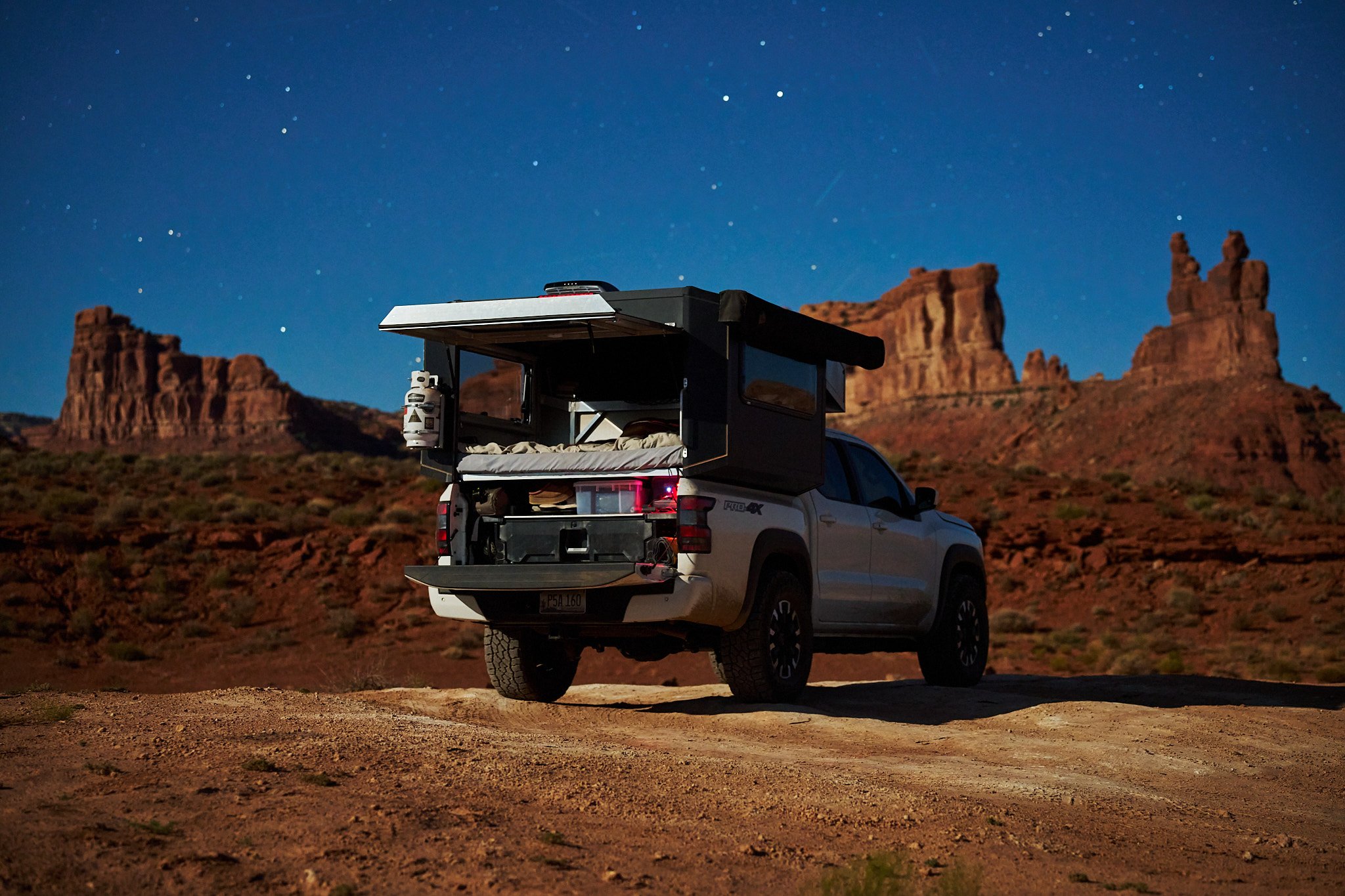What I Found When I Finally Slowed Down
Episode 3 — Stanley, Craters of the Moon & Valley of the Gods
I didn’t set out looking for stillness. I set out chasing momentum. New places, new footage, another story in the can. But somewhere outside Stanley, Idaho—after another long drive, another last-minute camp spot, and a growing frustration I couldn’t quite name—I hit a wall.
And weirdly, it felt kind of good.
How We Got Here (And Why It Changed)
The original plan was to head deep into the Uintas. High elevation, alpine lakes, some distance from the summer heat. But after too many back-to-back driving days, too many rushed setups and tear-downs, we needed a reset. The kind you can’t plan. So we pivoted to Stanley.
Stanley, ID — A Town Beyond Time
I think Stanley might be one of the last places of its kind left.
There’s no stoplight here. No fast food. Just a cluster of hand-built cabins, some wild-eyed locals, and a view that looks like it hasn’t changed in 10,000 years. Nestled at the edge of the Frank Church—River of No Return Wilderness (the largest roadless wilderness in the Lower 48), Stanley feels like a town that time forgot… and wants to stay that way.
It’s not just preserved. It’s resistant—a bastion pushing back against the tide of development and sameness sweeping through most small mountain towns. Here, life still moves with the sun, not a schedule. And that kind of quiet does something to you.
We camped near the river, and the mosquitos were relentless. I mean—feral. But the stillness made it worth it. I stopped filming. Stopped pushing. Just sat by the water barefoot, watching steam rise off the current. It was the first time in weeks that I actually felt where I was.
Fun fact: Stanley has one of the coldest average temperatures in the contiguous U.S.—it regularly drops below freezing even in summer. Locals call it “Little Alaska.”
Craters of the Moon — Welcome to Planet Earth 2.0
From alpine stillness to alien terrain. Craters of the Moon isn’t a metaphor—it’s a legit volcanic preserve, formed by ancient lava flows that stretch across south-central Idaho like black scars on the land. It’s weird, vast, and a little disorienting—in the best way.
We rolled into the campground late. It was just $15, and because it’s managed by the National Park Service, we had to stay in a designated site. But that ended up being a blessing. Wind gusts hit hard overnight. At sunrise, I stepped out to a sky streaked with pastel light over endless lava rock.
Everything about this place slows you down. The jagged basalt, the harsh textures, the scale. It doesn’t ask to be filmed—it dares you to try. And I liked that challenge.
Quirky fact: Astronauts trained here in the 1960s to prepare for walking on the moon. NASA figured if they could hike this terrain, they could handle lunar geology.
Valley of the Gods — Heat, Silence, and the Long Drive In
Southern Utah in summer isn’t exactly forgiving. The days are brutally hot, and places like Valley of the Gods don’t offer much shade—or mercy. But we arrived just after dark, and that timing changed everything.
The rocks were glowing under moonlight. Towering sandstone monoliths surrounded us on all sides. And because we were driving in after sunset, we had no idea how dramatic the landscape was until we woke up the next morning.
Valley of the Gods is public land, managed by the BLM, and dispersed camping is allowed almost anywhere. No signs. No rangers. Just dirt tracks and solitude. The silence here feels ancient.
Historical side note: The valley was once submerged under an inland sea, and the dramatic red towers were shaped by millions of years of wind and water erosion. The Navajo call this region Tsé Biiʼ Ndzisgaii—"the valley within the rock."
A Rig Worth Showing (Finally)
This episode is the first time I walk through my full Moonlander X camper build. If you’ve followed the channel, you know this setup has been months in the making—dialing systems, refining workflow, balancing weight, power, storage, and comfort in a space that barely clears six feet tall.
This rig is how I live, how I work, how I keep moving. From the DECKED drawer system to solar power to my editing station and camp kitchen, everything has a reason. And for once, I felt like the story was ready to tell—not just the features, but the why behind them.
Final Thoughts — What Slowing Down Gave Me
If there’s a throughline in this episode, it’s this: Stillness isn’t a failure. It’s not giving up. It’s giving in—to where you are, what you feel, and what the land is trying to say if you’re quiet enough to hear it.
The most honest moments on this trip didn’t come from a drone shot or a perfect sunrise. They came when I let go of the need to chase the next thing and just stood still long enough to actually see.
This lifestyle will stretch you. It'll test your limits, your patience, your resolve. But in the cracks—the campsites that don't go as planned, the changes in direction, the nights you show up late and dusty—that’s where the real stuff lives.
And that’s why I’m out here.
—
Watch Episode 3
Watch on YouTube





